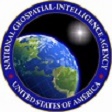NGA announces introductory contract with Planet to utilize small satellite imagery
 The National Geospatial-Intelligence Agency will have access to a global imagery refresh every 15 days of most of Earth’s landmass through a new contract with Planet, a commercial imagery provider operating the largest constellation of Earth-imaging satellites.
The National Geospatial-Intelligence Agency will have access to a global imagery refresh every 15 days of most of Earth’s landmass through a new contract with Planet, a commercial imagery provider operating the largest constellation of Earth-imaging satellites.
This feed, known as the Planet Feed, will be utilized across the National System for Geospatial Intelligence and select members of the civil federal community. The NSG is the operating framework supported by producers, consumers or influencers of geospatial intelligence, or GEOINT.
“Improving our profession means further committing to the use of innovative capabilities being developed and deployed by commercial data providers and analytic companies for mission accomplishment,” said NGA Director Robert Cardillo at the May 2016 GEOINT Symposium in Washington, D.C. “Our commercial space partners will provide meaningful, higher revisit capabilities this year and we look forward to turning their exciting potential into our mission reality.”
The introductory contract includes a seven-month period of performance, beginning Sept. 15 and valued at $20 million.
The Planet Feed includes multispectral imagery from constellations at 3-5 meter and 6.7 meter resolutions. The imagery products will include unrectified and orthorectified images and orthomosaic single-pass tiles. The global scope of coverage and high temporal frequency of collection from Planet provides NGA with new data sources to support the agency’s many missions including foundation GEOINT, humanitarian assistance, disaster response and intelligence.
“Planet’s mission to provide timely, global imagery to empower informed, deliberate and meaningful stewardship of the planet is directly in line with our mission,” said John Charles, NGA commercial imagery lead. “We’re no longer simply admiring the potential of small satellites and their persistent capabilities, we’re harnessing that potential.”
Planet designs, builds, and operates a constellation of Earth imaging nano-satellites. The global scope of coverage and high temporal frequency of collection from Planet will provide NGA with new data sources to use for geospatial intelligence analysis.
Source: NGA







